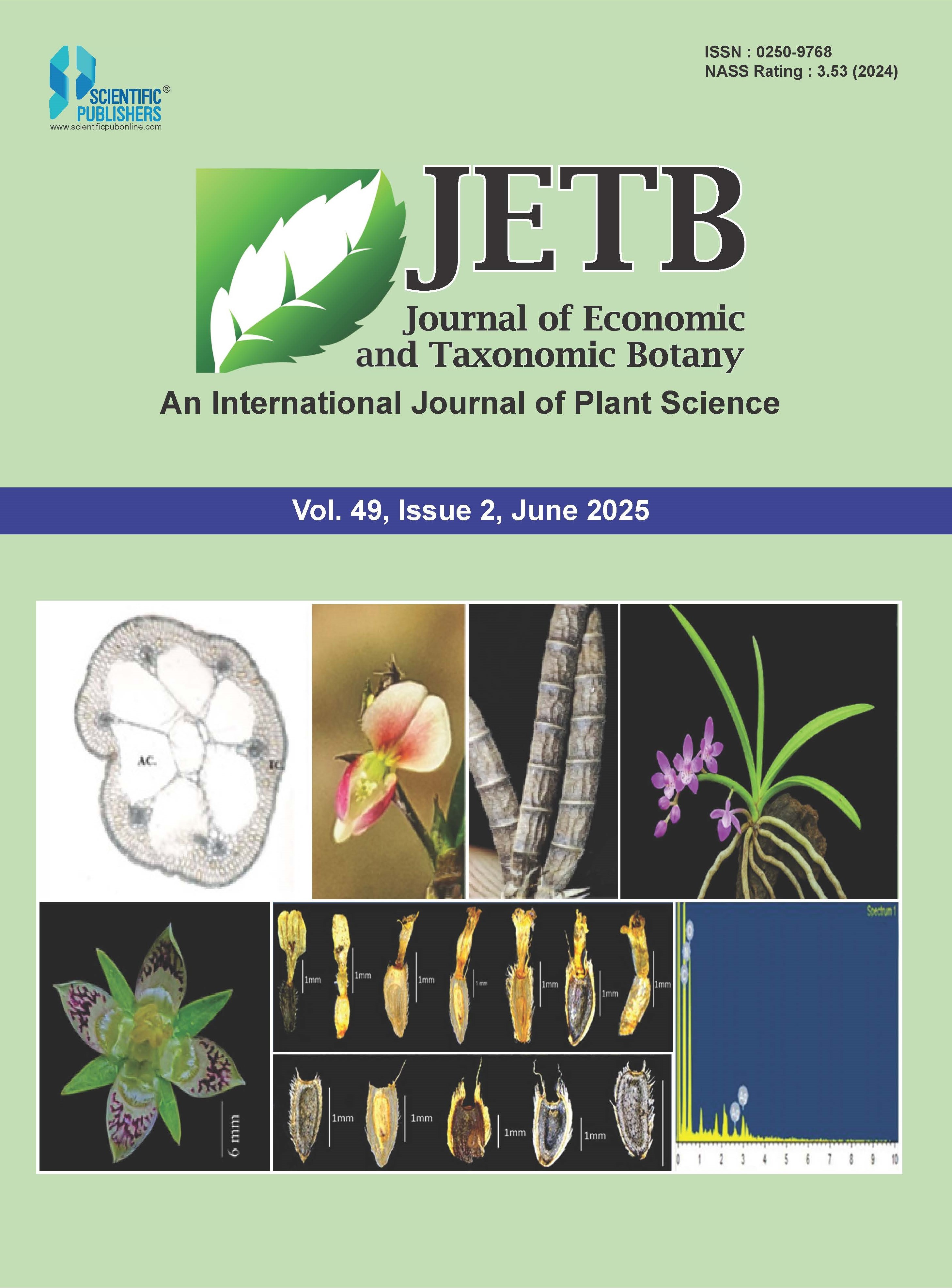Journal Details
Journal Name : Journal of Economic and Taxonomic Botany
Author : Vatsavaya S. Raju
ISSN : 0250-9768
E-ISSN : A/F
Journal Type : Subscription

Phytodiversity and Conservation of Sriharikota Island, Nellore District, Andhra Pradesh
S.K.M. Basha, P. Siva Kumar Reddy & M. John Paul

| Select | INR(₹) | Type |
|---|---|---|
| 250.00 | Personal | |
| 1000.00 | Institutional |




